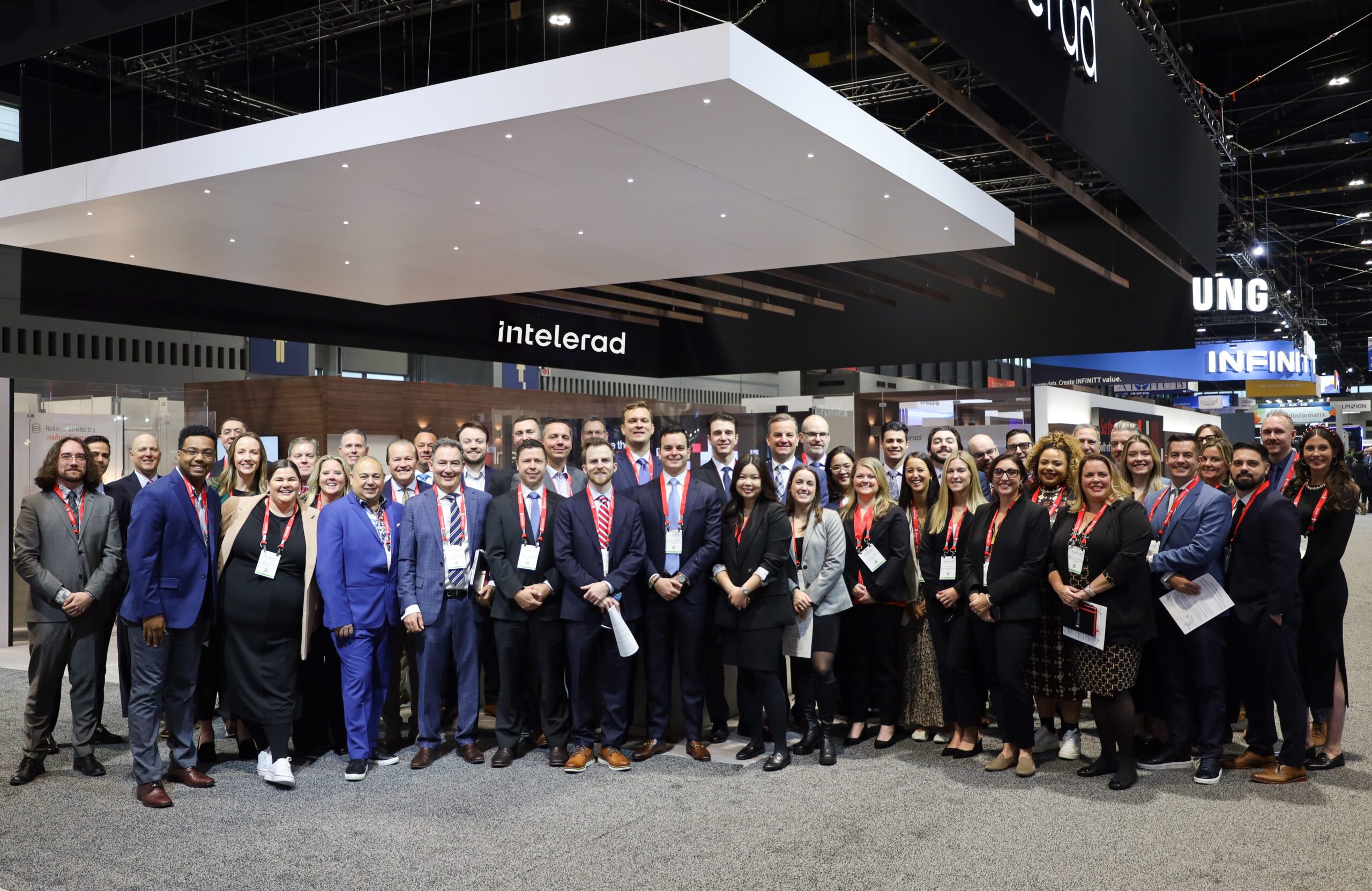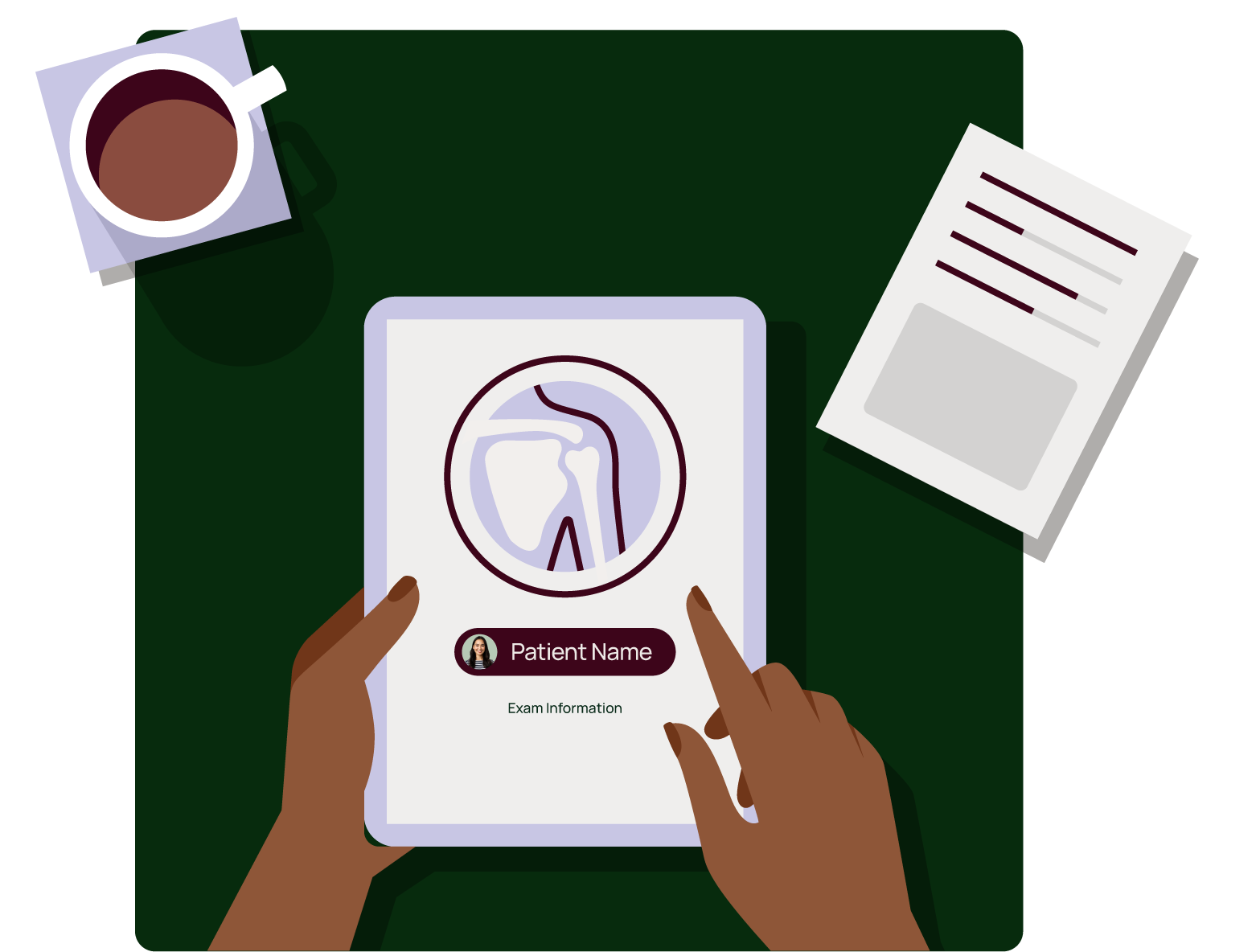Day to day, radiologists face bottlenecks that slow down their processes, from managing worklists and accessing images to collaborating with colleagues and generating reports. These challenges not only affect radiologists’ productivity but also have a direct impact on patient care.
For patients, delays in delivering diagnoses can lead to slower treatment initiation, potentially affecting outcomes. On the radiologist side, if workflows don’t proceed smoothly or radiologists become bogged down with administrative work it can contribute to increased stress on radiologists, which can lead to burnout.
Addressing these bottlenecks is crucial.
The integration of advanced technology into radiology workflows can significantly enhance efficiency and streamline operations. By leveraging Intelerad’s solutions, reading groups can overcome these bottlenecks for quicker turnaround times, improved diagnostic accuracy, and better patient outcomes and satisfaction.
Bottleneck: Deciding What Case to Read and When Solution: Intelligent Worklist Prioritization, Auto-Next Reading, and Remote Viewing
Radiologists often spend valuable time determining which study to read next, weighing how critical, complicated, or bogged down with work they are when trying to determine what case to read, and when. This often leads to inefficiencies and delays and does not optimize the radiologist’s time. InteleOrchestrator addresses this issue by automating the process of organizing and prioritizing the radiology reading worklist across the entire organization. Its intelligent assignment engine continuously evaluates and prioritizes cases in real-time, considering factors such as:
- How critical the case is
- Radiologist subspecialty
- Workload
- Availability
- Location
- SLA requirements
- STAT escalation needs
This ensures that the right study is always read by the right person at the right time.
After reading a case, the Auto-Next feature immediately provides the radiologist with their next case, maintaining a continuous workflow and improving overall productivity. The flexible interface allows radiologists to read remotely and securely even when they are not onsite, allowing them to provide timely care regardless of their physical location.
Bottleneck: Launching Multiple Apps to View Imaging and Slow Loading Times Solution: Integrations with PACS, EHR, RIS, and HIS Systems and Cloud-Based Storage
Even though technology has come so far, medical practices still launch multiple applications and deal with slow image loading times because their PACS doesn’t have integration capabilities and they use on-site data storage.
Intelerad’s solutions tackle these issues with the comprehensive integrations offered in IntelePACS. IntelePACS links with third-party , RIS, and HIS systems quickly and easily. This allows radiologists to access all necessary information from a single interface, or even from the patient’s chart. This eliminates the need to switch between different platforms, significantly reducing the time it takes to access information and imaging. These integrations facilitate data processing and improve operational efficiency across teams.
When it comes to viewing patient imaging, Intelerad’s cloud-based solutions offer significant advantages in terms of speed and accessibility. InteleShare VNA provides a centralized repository that unifies imaging data from multiple systems into a single, quickly accessible source. This is because cloud-based storage eliminates the latency associated with on-premises servers, substantially reducing loading times.
Bottleneck: Difficult Cases Require Extended Time to Diagnose Solution: Advanced Diagnostic Tools Powered by AI
Radiologists often encounter complex cases that require extended time for accurate diagnosis. Intelerad addresses this challenge with advanced AI-powered diagnostic tools designed to enhance efficiency and accuracy.
The AI algorithms embedded in IntelePACS streamline the diagnostic process by automatically analyzing images and highlighting areas of concern. This not only reduces the time required for manual review but also increases diagnostic accuracy. Additionally, AI-powered tools can assist with tasks such as tumor detection, bone fracture identification, and the measurement of anatomical structures, all of which contribute to more efficient and accurate radiological assessments.
Bottleneck: Sharing Patient Imaging with Other Departments or Outside Providers Solution: Automatic Outbound Image Sharing
Sharing patient imaging with other departments or external providers takes time if done through an industry-standard CD upload and can delay care delivery. With InteleShare, once an image is uploaded, it becomes instantly accessible to all relevant parties, eliminating delays associated with manual sharing processes. This ensures that other departments or outside providers receive the necessary imaging data promptly, enhancing the coordination of care.
For inbound imaging, InteleShare automatically integrates images from outside providers into the local system, ensuring that patient data is normalized and correct before entering the network. This maintains data integrity across disparate systems by automatically correcting patient information, preventing errors.
By automating the sharing process, Intelerad helps streamline communication and improve overall workflow efficiency, which may get patients the answers they want and care they need sooner.
Bottleneck: Generating Reports and Patient Communications Solution: One-Click MSQA Audits, Automated Communication and Tracking of Follow-ups InteleScreen automates patient communications and follow-up recommendations, ensuring that patients stay on track with additional visits for monitoring risk factors or getting follow-up imaging. It even automates MQSA tracking, simplifying compliance and helping practices prepare for audits.
InteleScreen has several shortcut features that automate repetitive tasks, like one-click audit reports or one-click negatives. This allows practices to spend less time on reporting so they can spend more time caring for patients.
Conclusion
By addressing these bottlenecks, radiology practices, clinicians, and patients alike stand to benefit in many ways. Practices can take some pressure off clinicians by reducing the amount of time they spend doing administrative work and launching different programs, allowing them to focus more on providing high-quality patient care. Advanced solutions also improve patient care delivery by accelerating the path to answers and ensuring timely follow-ups for better outcomes.
To explore how your practice can augment its workflow with Intelerad’s Radiology Suite, request a demo or reach out to our team.





